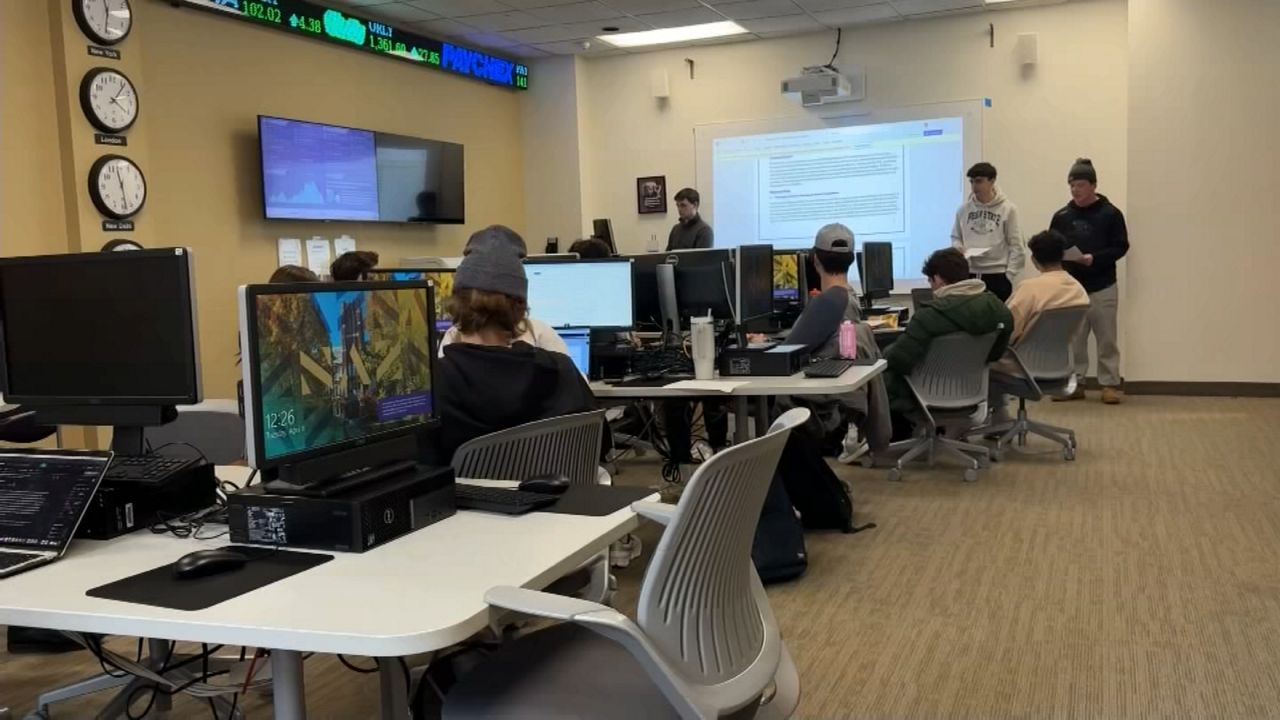As New York prepares for phase three of reopening its economy, businesses that remain closed wonder what it will look like when they finally get the green light.
Bowling is big in Rochester. At one point, the region had the largest number of bowling lanes per capita in the U.S. While not what it once was, many in the sport have their concerns.
What You Need To Know
- Bowling alleys have been hit hard by the pandemic, and are figuring out how they can reopen safely
- Local bowling alleys have been closed for months, losing revenue from leagues and other events
- Guidelines from the United States Bowling Congress include using every-other lane, and keeping league teams to just one lane
On Culver Road In Irondequoit, Parkview Bowl is a fixture. The 80-year-old house has wooden lanes and bowlers still keep their own scores.
“It’s old-time bowling at it’s best,” said Kevin Martin, who’s owned the bowling alley for forty of its eighty years in business.
Since mid-March, he’s been closed, shut down by COVID-19.
“We lost basically two months of our season,” he said. “Just out-and-out lost the business and the customers and everything else.”
League bowling is a major revenue source for bowling centers. When the shutdown occurred, many seasons were nearing the end of competition. Many centers had to return prize money from unfinished leagues.
“We’ve suffered like everyone else,” said Bill Fortino, general manager at Bowl-A-Roll Lanes in Henrietta.
Fortino says once bowling centers are allowed to reopen, there will be many changes. Social distancing must be practiced. Everything from balls to shoes to tables and restrooms must be sanitized after each customer leaves. Bowling is expected to be included in phase four of New York’s reopening, though no specifics have been mentioned yet, by state officials.
“So, it'll be an ever ongoing process of trying to clean and sanitize your facility,” said Fortino, who has been involved in the bowling industry for 50 years.
“You can do disinfectant and everything else, but the main thing is getting the people back into the centers,” said Martin.
The United States Bowling Congress has issued a number of guidelines for safe reopening. Fortino says New York’s plan could include using every other lane to keep bowlers apart, and keeping league teams on just one lane during competition, instead of the traditional back and forth on two lanes.
Recommendations include the use of every other lanes. Essentially cutting business in half creates a predicament for Martin’s eight-lane house.
“In most cases, I don't think any business can survive on 50 percent,” said Fortino. “That's the sad irony of the whole situation.”
Daytime senior leagues are a big part of the bowling business. The age group, according to medical professionals, is among the most at risk for COVID-19.
“They may opt not to come back at all,” said Martin. “And even if a bowler says, well, I’m gonna take the year off, — they took that year off and they don't come back.”
The bowling industry as a whole was already struggling before the shutdown. It’s a social sport by nature.
“We kid around that bowling is the blue-collar country club,” laughed Fortino.
Bringing bowlers back — and doing it safely — is now the biggest challenge.
“I think that bowling will come back, because everybody wants to bowl,” he said. “How long and when is going to be the real question.”










